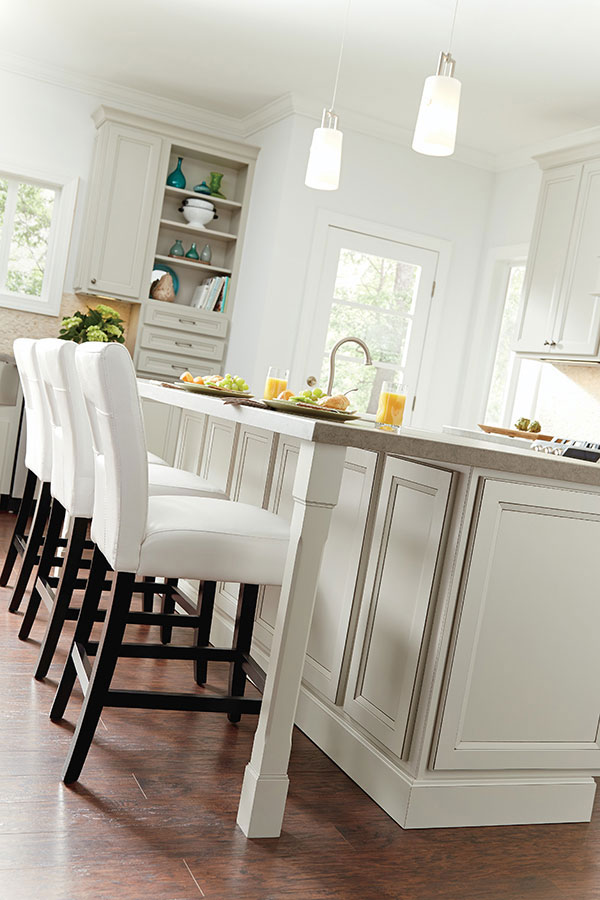Crucial Variables to Think About When Choosing Legs For Kitchen Island
Selecting the ideal legs for a cooking area island includes a careful assessment of numerous aspects that can considerably influence both capability and aesthetic appeal. Amongst these, the option of material plays a crucial function in guaranteeing durability, while the layout needs to complement the existing style. Moreover, considerations such as elevation and weight support are essential for security and comfort. As we discover these elements, it comes to be clear that each decision can have far-ranging ramifications for the total kitchen area experience. What subtleties should be considered in each of these groups to accomplish the excellent balance?
Product Options
When picking legs for a kitchen island, understanding the numerous material options is essential for attaining both visual allure and architectural stability (Legs For Kitchen Island). The choice of product dramatically influences not just the sturdiness of the island however additionally its overall design and performance
Steel legs, commonly made from stainless steel or functioned iron, contribute a contemporary and industrial feeling while making certain longevity and security. These products are resistant to wear and can support significant weight, making them excellent for bigger islands.
One more choice is engineered products, like MDF or plywood, which can be extra economical while still using a variety of finishes. They might not offer the same degree of stability as solid timber or metal. Legs For Kitchen Island. Materials such as acrylic or glass can develop a contemporary appearance, though they might require extra assistance to ensure security.
Eventually, the selection of product for kitchen island legs need to line up with the wanted performance and the overall style of the kitchen.
Design And Style

When thinking about style, the shape and finish of the legs are crucial. Tapered legs can provide a feeling of agility and style, while thicker, extra durable legs can share stamina and stability. Furthermore, the finish-- be it painted, tarnished, or all-natural-- need to match the cabinets and counter top materials to develop a unified appearance.
Additionally, the style of the legs can likewise reflect individual preference. Customized or decorative legs, such as those featuring detailed makings or distinct geometric shapes, can work as centerpieces, adding personality and individuality to the kitchen area. Ultimately, the appropriate selection will not only improve performance but additionally raise the visual charm, making the kitchen island a standout attribute of the home.
Elevation Considerations
Choosing the suitable elevation for kitchen island legs is vital, as it straight impacts both capability and convenience. The conventional elevation for a kitchen island usually varies from 36 to 42 inches, aligning with typical counter top heights.

It is additionally important to account for customers' elevations and preferences. Tailoring the height can make certain a comfy experience for all member of the family, making the kitchen island an extra practical and enjoyable area.
Weight Assistance
Making sure adequate weight assistance for kitchen island legs is crucial for both safety and performance. The kitchen island commonly serves several objectives, including food prep work, dining, and extra storage space, necessitating a robust assistance structure. When choosing legs, it is critical to think about the total weight capacity needed based upon the island's planned use and the materials that will certainly be positioned on it.
The choice of product for the legs plays a substantial role in their weight-bearing abilities. Strong timber, metal, and durable compounds usually provide remarkable toughness contrasted to lighter materials. Additionally, the style of the legs-- whether they are right, tapered, or have a pedestal kind-- can influence their ability to distribute weight successfully throughout the framework.
Always speak with the producer's specifications relating to lots restrictions to make sure that the legs can sustain the intended weight without compromising safety. In recap, choosing kitchen area island legs with sufficient weight support is crucial for developing a functional and secure cooking space.
Installation and Upkeep
Proper installment and upkeep of kitchen area island legs are vital for making certain longevity and security. To begin, it is necessary to follow the supplier's standards throughout installation. This commonly entails securing the legs to the island base making use of appropriate bolts, guaranteeing that the legs are level and straightened. Making see here use of a level device can assist avoid wobbling and boost the overall aesthetic allure of the cooking area island.
When set up, routine upkeep is essential to protect the stability and appearance of the legs - Legs For Kitchen Island. For wood legs, periodic cleansing with a wet cloth and application of ideal timber polish can stop dampness damage and preserve their coating. Steel legs may require a mild cleansing service to eliminate grease and gunk, followed by a dry fabric to stop corrosion formation
Furthermore, inspect the legs consistently for indicators of wear or damage, such as fractures or loose joints. Tightening up screws or bolts as needed can additionally prolong the life-span of the legs. By adhering to these installation and more upkeep practices, home owners can guarantee that their kitchen island continues to be durable and visually appealing for years to come.
Final Thought

Visual comprehensibility is paramount in selecting the style and style of legs for a kitchen area island, as these aspects substantially affect the overall ambiance of the space. Tapered legs can provide a sense of lightness and beauty, while thicker, much more robust legs can communicate stamina and stability.Choosing the suitable height for kitchen island legs is essential, as it directly impacts both functionality and comfort. In recap, picking cooking area island legs with ample weight assistance is crucial for developing a secure and practical culinary space.
In verdict, picking legs for a kitchen area island requires careful consideration of numerous variables, consisting of material options, design, elevation, weight support, and installation.